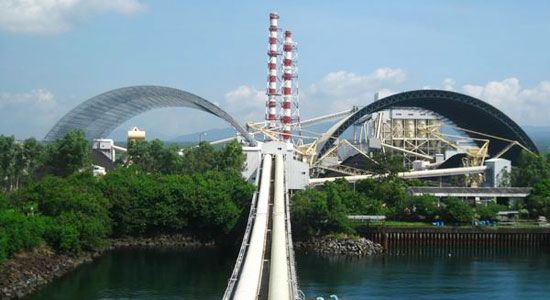Power plant capacity rises 13% to over 21,000 MW

By Victor V. Saulon
Posted on March 14, 2017
http://www.bworldonline.com/
PHILIPPINE power plants ended 2016 with a total installed capacity of 21,423 megawatts (MW), up 13%, though dependability statistics showed only slight improvement.
The Department of Energy (DoE) said dependable capacity as of last year reached 19,097 MW, or 89% of the total installed capacity, and slightly better than the previous year’s 88%.
However, this is far from showing the overall efficiency of the country’s power plants, said DoE Assistant Secretary Gerardo D. Erguiza, Jr.
He said some of the power plants had declared a derating of their capacity, thus showing minimal discrepancy with what they are producing and what they are expected to deliver.
“Their average performance has already been incorporated in their derating,” Mr. Erguiza said in Filipino.
He cited Sem-Calaca Power Corp., which should be delivering an average of 600 MW but was producing only about 400 MW.
He said the plant had “cured” its inefficiency by declaring its capacity at only 400 MW and was delivering around 400-480 MW.
Based on DoE data, Sem-Calaca’s two-unit pulverized sub-critical coal plant in Calaca, Batangas has an installed capacity of 600 MW, of which 526 MW are dependable. The plant started commercial operation in September 1984.
Sem-Calaca’s unit one is among those that went down at the same time that the Malampaya natural gas facility was on a scheduled maintenance shutdown from Jan. 28 to Feb. 16, 2017.
The Kalayaan pumped storage power plant in Kalayaan, Laguna is another example of a plant whose output is way below its rated capacity, Mr. Erguiza said.
The plant, operated by CBK Power Co. Ltd., has an installed and dependable capacity of 739.2 MW and 720 MW, respectively.
Mr. Erguiza said the Kalayaan plant serves to provide “frequency regulating reserve” or the operating requirement to maintain a balance between the available power capacity and the system’s demand because of small variations during normal operations.
“It’s not really meant to deliver that full capacity,” he said, adding that the plant produces only around 300-400 MW, which has become its derated capacity.
He said the derated capacity should be deducted further from the plant’s dependable capacity, which the DoE data do not show.
A closer look at available statistics shows the list of existing plants to include those built in the 1940s and 1950s, the efficiency of which has eroded through the years.
Luzon is home to two of these plants — the Caliraya dam-type hydroelectric power plant (HEPP) and the Botocon run-of-river type HEPP, both in Lumban, Laguna and operated by CBK Power. The plants were commissioned in the early to mid-1940s.
Mr. Erguiza said the older plants have been performing well based on their derated capacity. But they risk simultaneously tripping and cause power failure. He cited natural gas-powered plants as well as geothermal facilities as showing good performance in terms of efficiency.
Based on the DoE statistics, coal-fired power plants accounted for 34.6% of the total installed capacity as of last year, an expansion compared with their 31.5% share in 2015. Renewables accounted for 32.5%, down from 33.9% previously.
The share of oil-fired plants thinned to 16.9% from 19.3%, while that of natural gas-powered facilities widened to 16% from 15.3%.
Energy Secretary Alfonso G. Cusi has been declaring that his department is technology-neutral as to the types of power plants it will approved as long as they meet the system’s requirement of 70% baseload, 20% mid-merit and 10% peaking power.
His wishlist includes the development of more indigenous sources of electricity to do away with more expensive oil, which the country largely imports.
As of 2016, foreign oil suppliers billed the country a total of $7.45 billion, down 13.5% from $8.61 billion in 2015. Of the total, finished products accounted for 55.4% and crude oil made up 44.6%.
“This was attributed to lower import cost (for both crude and petroleum products) although petroleum product import volume increased,” the DoE said.
In terms of volume, the country increased its crude oil import by 0.9% to 78.77 million barrels. It also increased its petroleum product imports by 12.9% to 86.11 million barrels.
In contrast, the Philippines’ petroleum export earnings fell by 23.2% to $675 million because of decreased volume of crude exported and lower freight on board price per barrel.
The overall 2016 net oil import bill amounted to $6.78 billion, down 12.4% from $7.73 billion in 2015.


